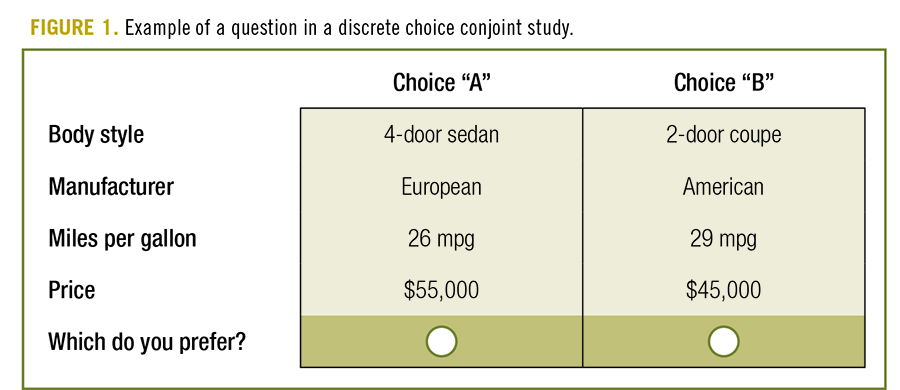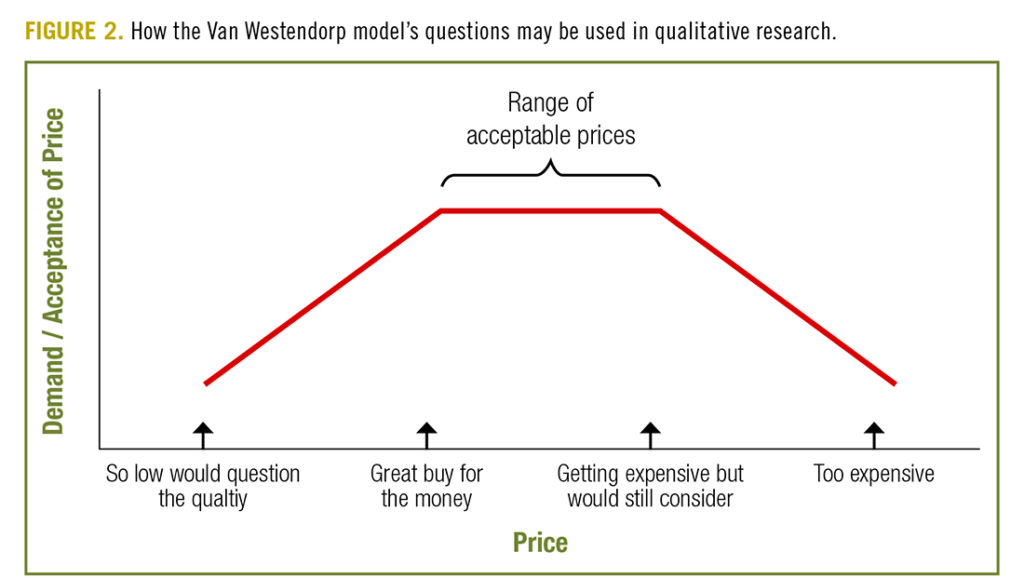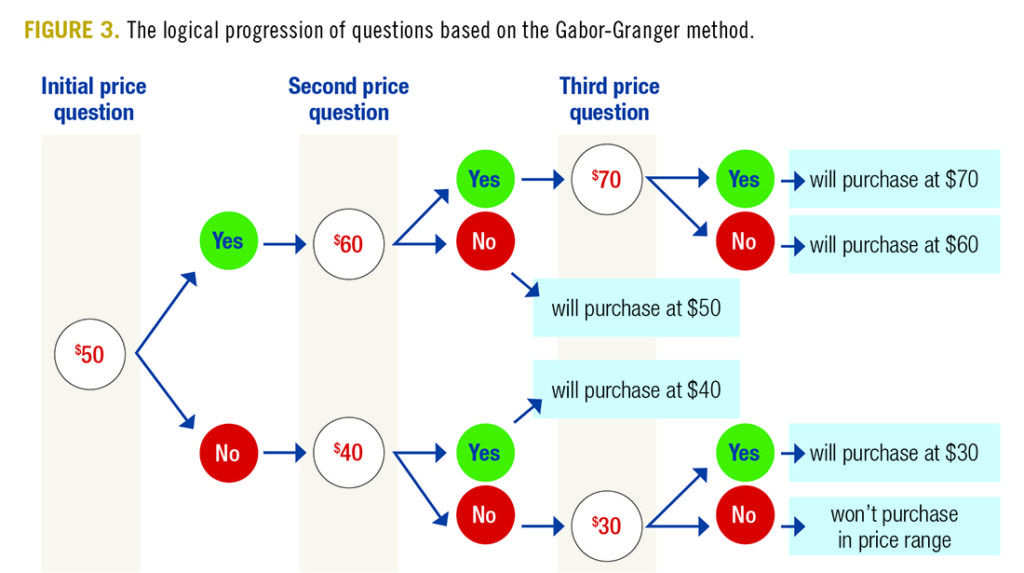Qualitative research clients often want to explore the market viability of their products and services, including benefits and drawbacks; features and attributes; advantages and limitations; and of course, trade-offs in being able to offer the right mix of qualities. One of the components of market viability is price, so clients often want to “test” pricing as part of this evaluation, even though qualitative feedback is not the best approach for defining price points or looking at the role of specific prices in market acceptance.
But there are ways in which pricing can be explored through qualitative research. It can help inform a more formal quant exploration of pricing, can be done after quant pricing testing to flesh out and explain the quant findings, and it has its own unique applications.
I have been asked to do pricing in qual a lot over the years and have developed (and borrowed) a few techniques—some use elements from quant methods while others are unique to qual.
General Best Practices
First off, I have found that, no matter what approach you use for exploring pricing in a qualitative setting, there are some best practices to ensure the best and least biased results. This certainly is not an exhaustive list, but includes a few things that I have found valuable over the years.
Avoid a price negotiation. Clients often expect qualitative researchers to ask, “How much are you willing to pay?” Sometimes this cannot be avoided, but understand that this is a flawed question to ask in any research exploration because we cannot expect respondents to always answer truthfully.
Asking someone what they are willing to pay can be heard as “What is the absolute most you would pay?” And what respondent wants to answer that, when their goal as a prospective buyer is to get the lowest price? Asking “What are you willing to pay?” in qualitative research can turn it from a research exploration into a negotiation in which the respondent may try to bargain you down rather than provide an insightful answer.
Instead, a slightly indirect approach can remove much of this negotiation dynamic. Two approaches I prefer:
- “Suppose you are in a store and see this item on a shelf, and you notice a price tag on the shelf…what is the price that you would consider to be about right?” The answer to this question establishes what the respondent considers a fair or appropriate price, regardless of willingness to pay. Notice that you aren’t asking the respondent what they would pay—that comes later. Instead, you are tapping into the respondents’ understanding of the nuanced and complex minefield of the consumer pricing landscape and their answer establishes a benchmark for the other pricing questions yet to come.
- “If the price was $xx, how likely would you be to buy it?” In this case, you establish the price, so the respondent is no longer thinking about negotiating to a different price and is only thinking about their motivation level at your proposed price. This approach puts distance between any potential negotiation dynamic and the research process. The price you ask about could be the fair price you established earlier, a price your client has said they are thinking of selling it for, or any other set price.
Don’t ask too many times. It can be tempting to try to parse the respondents’ feelings about price by asking over and over with incremental price changes. How do they feel about a price of $50? How about $45? How about $40? How about $35? How about $30?
The problem with this approach is that respondents can pick up on the pattern in your questioning—they see this approach as you fishing for the highest price they are willing to pay. They can counter this by starting to be unresponsive or even by flat-out telling you, “just tell me the lowest price you’re going to ask about and I’ll answer that.” They can see your questions as another negotiation approach.
I have found that you can ask up to three questions in a series like this; after that, respondents can start to play a negotiating game with you. And you can get away with this three-question approach only a few times; respondents can catch on to multiple attempts at asking about three price points.
Ask about the right time frame. This gets into behavioral economics, but the basic idea is that the cost of something can look and feel differently depending on how often that cost is paid and/or the time period that purchase covers. For example, a dollar a day might sound very affordable, $30 a month could sound reasonable, and $360 a year perhaps sounds like a sizable purchase. All these frameworks are describing the exact same distribution of costs over time and yet they feel very different. You may want to ask all of these different ways of looking at the price for the benefit of the client’s marketing options, but be sure to include asking about the actual transactional price (how the product or service actually will be paid for).
Get respondent commitment. Have respondents privately write down their answer to any question about price before discussing it to avoid missing insights.
As an example, I once was conducting focus groups among business office managers about an office technology product. I asked them to first write down what they thought such a product would cost, after which I went around the table having each respondent reveal their answer. Responses ranged from $10,000 to about $80,000, until I came to a woman who was almost last to answer, and she hesitated. I politely asked her to let me know what she had written down.
A bit embarrassed, she finally admitted to having written down $1 million. If I had not asked her to write her answer down first, she most likely would have changed her answer upon hearing the other respondents’ thoughts to bring her response more in line with theirs, but by having her commit her answer to paper first I was able to remove that bias and find out what her true thought was.

Adapting Quant Techniques to Qual
There are a variety of techniques in quantitative research for determining pricing that can pinpoint specific price points, plot a demand curve, and predict market share and/or profitability for
different pricing scenarios. While qualitative research cannot produce these kinds of outputs, it can adapt some of the techniques from these quantitative models to be used successfully in a
qualitative setting. Here are a few:
Choice-Based Conjoint Analysis (CBC)
Conjoint analysis is a collection of techniques that gets at the combinations of attributes and features (potentially including price) that customers prefer for products and services. The most common of these is choice-based or discrete choice conjoint (often called CBC), in which respondents are presented with two or more bundled collections of attributes and asked to choose between them.
Figure 1 shows an example of one question in a discrete choice conjoint study on automobiles. In a conjoint study, such choices are presented over and over, perhaps eight or two or twelve times, with different attribute combinations each time, and asking the respondent to choose a preference between each list of attributes. This allows the computer to discern what “utility value” the respondent places on each particular attribute choice as it is traded off against other attribute choices.
This basic idea can work quite well in qualitative, too. Working with your clients, you can devise cards or slides that look like Figure 1, showing pre-selected combinations of attributes—the ones that the client is most interested in evaluating and in seeing the kinds of trade-offs respondents make. In the focus groups or IDIs (in-depth interviews), you can show these to respondents and have them choose their preferences. But in qualitative you also can go deeper, having them explain why they make those trade-offs and asking follow-up “what-ifs.” You can even have a round of playoffs at the end, pitting the winning combinations against other winners to find respondents’ ultimate preferred combination of attributes.
 Van Westendorp Price Sensitivity Model
Van Westendorp Price Sensitivity Model
This approach can be thought of, on the surface, as a more elaborate version of the “Goldilocks” approach. We all know the story of Goldilocks, the little girl who snuck into the house of the three bears and ate their porridge, finding one too hot, one too cold, and one “just right.”
The Van Westendorp model asks pricing questions to find out what price is too high, what is too low, and instead of one “just right” question it asks two that bracket the range of acceptable “just right” prices. Specifically, the questions are:
- The price that is so expensive you would not buy.
- The price that is so low you would question the quality.
- The price that is starting to get expensive, but you would still consider.
- The price that is a bargain or a great buy for the money.
The Van Westendorp model uses these responses in a quantitative approach and plots the various response curves against each other, and the various intersections of particular lines on this graph represent various tipping points and optimal points for the product’s pricing.
Qualitative research can borrow from this model by asking respondents the same four questions. While you cannot graph the results to get at the deeper Van Westendorp model analysis, it can be a good way to find the range of acceptable prices and where those tend to drop off at either end. Figure 2 shows a representation of how these questions can deliver insights on a product’s pricing. Note: this graph is not what the Van Westendorp model (VW) would output, it simply shows how the VW questions can be used in qualitative.
Just remember that Van Westendorp assumes that respondents have a good understanding of the product’s competitive pricing market reality, so it is not a good technique for exploring pricing of new product concepts or of products that the respondents are not familiar with.
Gabor-Granger Method
The Gabor-Granger method is a fairly straightforward approach to exploring the upper limit of what someone is willing to pay. The approach is simple: working with the client, you develop five possible prices that the product could be sold for. You start by asking the middle of those prices, and repeat up to two more times, moving either up or down the price points depending on the respondent’s answers. The question is purchase intent, and it is asked the same
way throughout and usually is presented with five choices:
- Definitely would buy.
- Probably would buy.
- May or may not buy.
- Probably would not buy.
- Definitely would not buy.
If the person definitely or probably would buy, call that a “yes” and progress to higher prices; if they are neutral or choose either of the would not buy choices, call that a “no” and progress to lower prices. Figure 3 shows the logical progression of the questions based on the answers if the five price points are $30, $40, $50, $60, and $70. This graphic actually makes the process look more complicated than it is—just remember that you are trying to find the highest price (upper limit) that the respondent is willing to pay.
The Gabor-Granger method has a lot of special tricks in the analysis to predict the best price point for the highest overall revenue and price elasticity, but qualitative researchers can use the logical progression approach of this model’s questioning to test for upper price limits just as easily. Because this method is iterative based on each individual respondent’s answers, in qualitative it is best used in IDIs rather than in groups.
Monadic Approach
Monadic price testing is a very simple concept—working with the client, you choose multiple possible price points to test, and you divide up the sample so that each respondent is asked only one of those prices (and never sees the other prices). This is classic A/B testing, and the beauty of this design is that it removes the negotiation bias completely because any respondent is exposed to only one price and never hears that a lower or higher price is also being considered. This approach can hold all other variables constant while isolating only the effect of the different price points.
The rub with quantitative monadic testing is that it can be expensive to test multiple price points because it requires a large sample, large enough that each sub-sample that is asked about any one given price can hold its own for statistical analysis.
In qualitative we generally aren’t concerned much with sample size, but with monadic testing you do need to consider how many individuals will answer about any given price point. Since you will be asking different respondents about different prices, IDIs rather than groups are better for a monadic approach in qualitative. Remember in your analysis that you are comparing the reactions of one group of people about one price against the reactions of a different group of people about another price, so the comparison is indirect—you never have the feelings of the same people about more than one price.
 Techniques Unique to Qual
Techniques Unique to Qual
Qualitative research has its own unique strengths, and this applies in pricing research as well as any other subject. So, as much as qual can borrow from quant for approaches to exploring pricing, qualitative also can be leveraged in unique ways to better understand reactions to pricing. Generally,
I would put these unique abilities of qual into the buckets of:
- Being able to ask respondents why they feel as they do about price points.
- Being able to pose what-if questions about pricing (or about product features for a set price).
- Being adaptable in the prices you ask about.
- Comparative/framework pricing that doesn’t try to peg a price in a vacuum, but instead compares it to the prices of other known products.
- Creative exercises to more fully explore reactions to pricing.
- Qual-before-quant price exploration to define appropriate price points
and issues around pricing to test in the quant. - Qual-after-quant price exploration to gain richer insights into the why and what-if behind the quant results, explore new/different price points and adjustment points, refine concepts, and explore emotional reactions to the quant results.
Here are some specific exercises I have used in price exploration that are unique to qualitative research:
Divide the group. If there is a big disparity on feelings about price for a given product, you can divide focus group respondents into low vs. high pricers and have each segment try to convince the other why their price is closer to the right or more appropriate one. Listen to their arguments and justifications and which points are persuasive to the other segment.
Role-play store employees. Put all the group’s pricing feelings on the easel, then select two respondents to role-play. The scenario: they work in the store selling this product and must set the store’s price based on the information on the easel. Listen to their approach to solving this problem. Pick a different pair of respondents to role-play for each different product or price point being explored.
Role-play shop-along. Have a respondent role-play that they are out shopping and see this price in the store, then talk out loud about their thoughts and reactions. This works well in both groups and IDIs.
Ask relative pricing. Sometimes the best way for people to talk about the price for something is to talk about the price for something else. Ask respondents to compare this price to the prices for other products like this. Have them talk out loud about whether this one should be the same, lower, or whether there are reasons that justify it being higher.
Menu building. If clients want to explore a higher price than most respondents are willing to accept, ask respondents what would have to happen to the product for it to be attractive at that price. You can ask this open-ended or provide a menu of potential feature/attribute choices to see which are best at enhancing the product’s value to the client’s desired price. This technique brainstorms value in a reverse direction—instead of respondents putting a price on a product, feature, or attribute, they put features and attributes onto the product to match the value of the fixed price.
Conclusion
There is reason to be cautious about exploring pricing in qualitative research, because price is a quantitative value and measurement. But that doesn’t mean that qualitative should shy away from any exploration of price—instead, qualitative research can be very helpful. Whether using approaches unique to qual or borrowing techniques from quant, qualitative research has unique strengths and advantages that can be used for richer insights into price exploration than quant alone can provide.


Be the first to comment